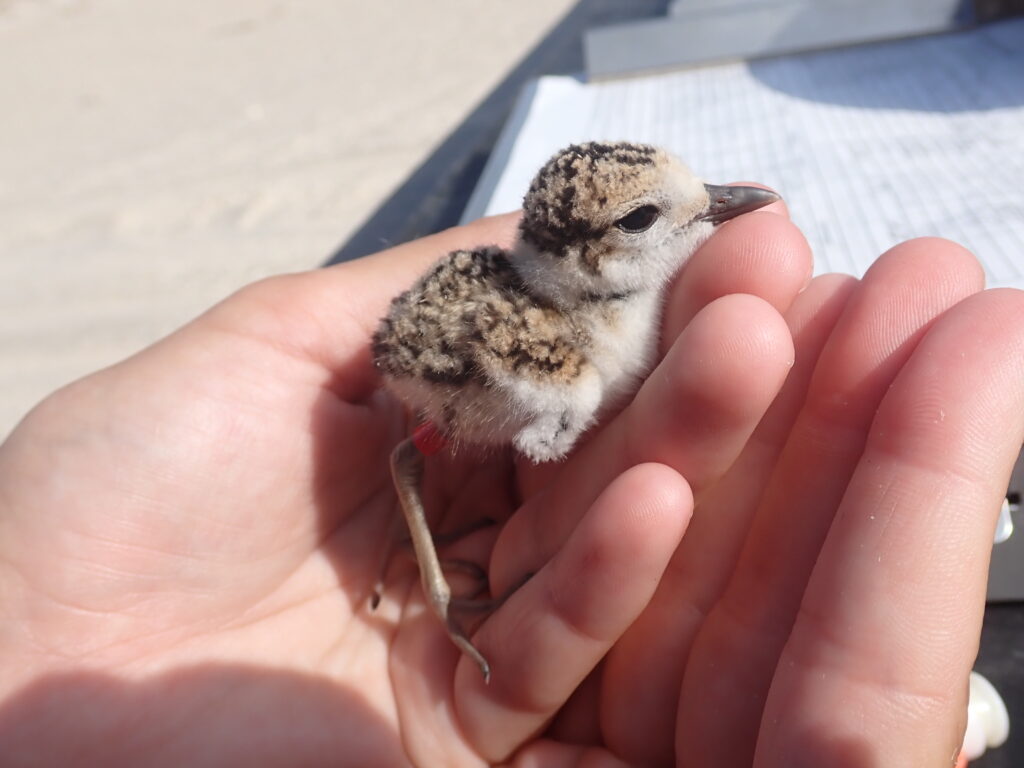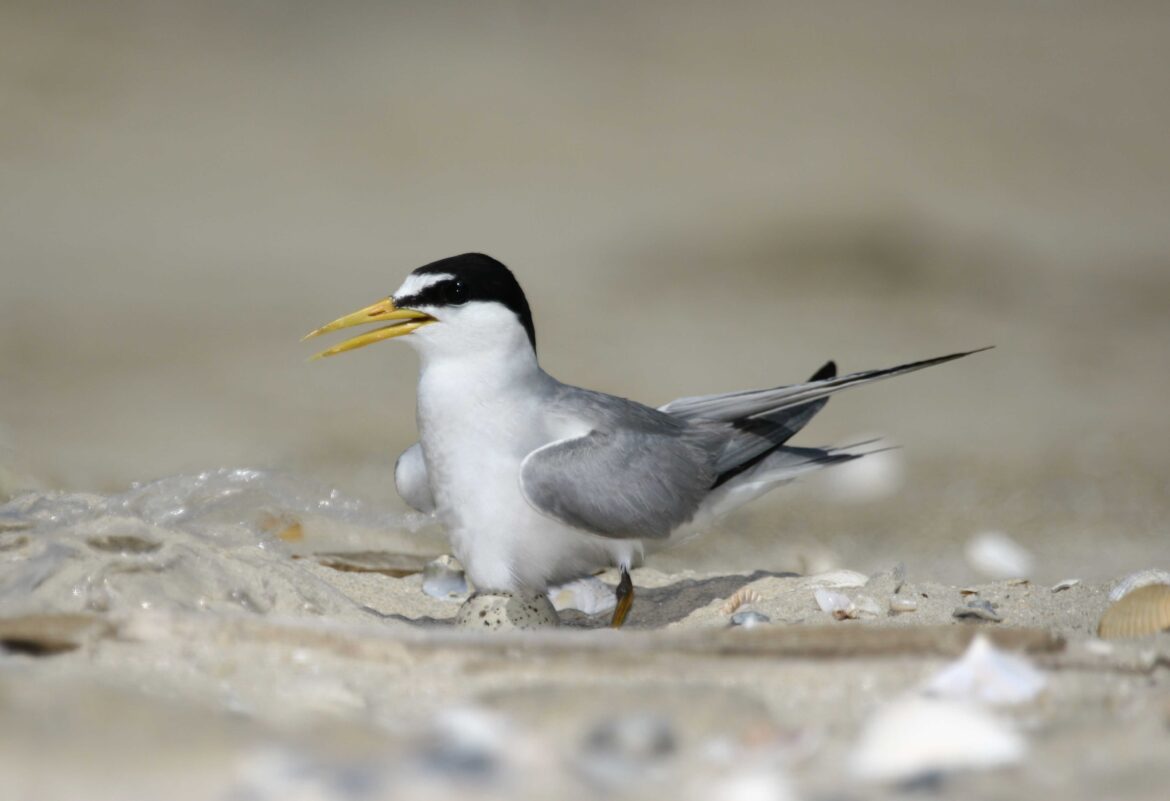By Celeste Silling
Now that the weather is warmer, our researchers here at Gulf Coast Bird Observatory have begun another season of our Beach-nesting Birds monitoring project. Wilson’s Plovers and Least Terns are nesting on the beaches of the Upper Texas Coast, and it is our research team’s job to find them, monitor them, and teach the public how to protect them.

Wilson’s Plovers are sneaky shorebirds that nest directly on the ground in the soft sand along dunes, mudflats and shelly areas. The pairs are territorial and easily disturbed by people, dogs, cars, and other threats. One of the main causes of nest failure amongst these birds is disturbance, as the parents sometimes have to prioritize protecting their nest (chirping, running, flying at beachgoers and other interlopers) over incubating their babies. Their eggs or chicks get over-heated and perish often in this way, while their parents are off defending the nest. So, beachgoers can easily save the lives of these birds simply by giving them their space!
The Least Tern is a small black and white waterbird that nests in colonies on the ground in flat, open, shelly areas. Similar to the plovers, these terns are very prone to disturbance, and you can often see the entire colony up-in-arms about a trespassing beach-goer or car. Fortunately, because they nest in a large group, our monitors are able to protect whole colonies by erecting symbolic fencing around them with orange twine and poles with signs. If you want to help these birds, just stay away from the fencing! You can save animals and avoid an attack from a tern tornado just by staying 50 yards away.
Our researchers monitor the beaches every few days to keep track of the birds. They track whether they’ve made a nest, laid eggs, whether there are potential threats, and if the eggs are able to hatch. GCBO researchers catch and band the plover chicks so that we can track their success and determine if they return to this beach once they’ve grown into adults.
The plover chicks, once they’ve hatched, are fuzzy little cotton balls on stilts. They are well camouflaged and tend to hunker down in the sand to hide from predators. Unfortunately, this makes them nearly invisible and prone to being run-over or stepped on. Driving slowly, away from the dunes and watching where you step can help these little birds immensely.
April through July is the most vulnerable time for Wilson’s Plovers, Least Terns, and other beach-nesting birds. You can help these birds by giving them their space; fish swim and play from 50 yards away. Drive slowly, avoid the dunes and back-beach areas where plovers and terns tend to nest, and keep dogs on a leash at all times. From Gulf Coast Bird Observatory, we hope to see you and the birds on the beach this summer!
Photo credit: Mike Williams
Caption: Least Tern with egg
Photo credit: Morgan Barnes
Caption: Gulf Coast Bird Observatory researcher banding a Wilson’s Plover chick

